Throughout their lives and even within a single day, American Woodcock are citizens of many habitats.
By day they forage in forest, probing the soft soil with their bill in search of worms and insects.
But every evening at sundown woodcock silhouettes appear in the sky as the birds commute from the forest to settle in fields and clearings where they spend each night.
One reason they may do this to avoid predators. By measuring predator activity in both habitats, a recent study in Rhode Island found that predator abundance at night was far lower in open fields where woodcock roost compared to the forests where they spend the day.
In late winter and early spring, woodcock also use open fields as courtship grounds where they make their dramatic display flights. But taller woods need to be close by, because that is where the female will ultimately make her nest.
In addition to forest and fields, woodcock also use the shrubby, dense vegetation that fills a field when it is allowed to grow and become forest again. They use this young forest for feeding, nesting and raising chicks.
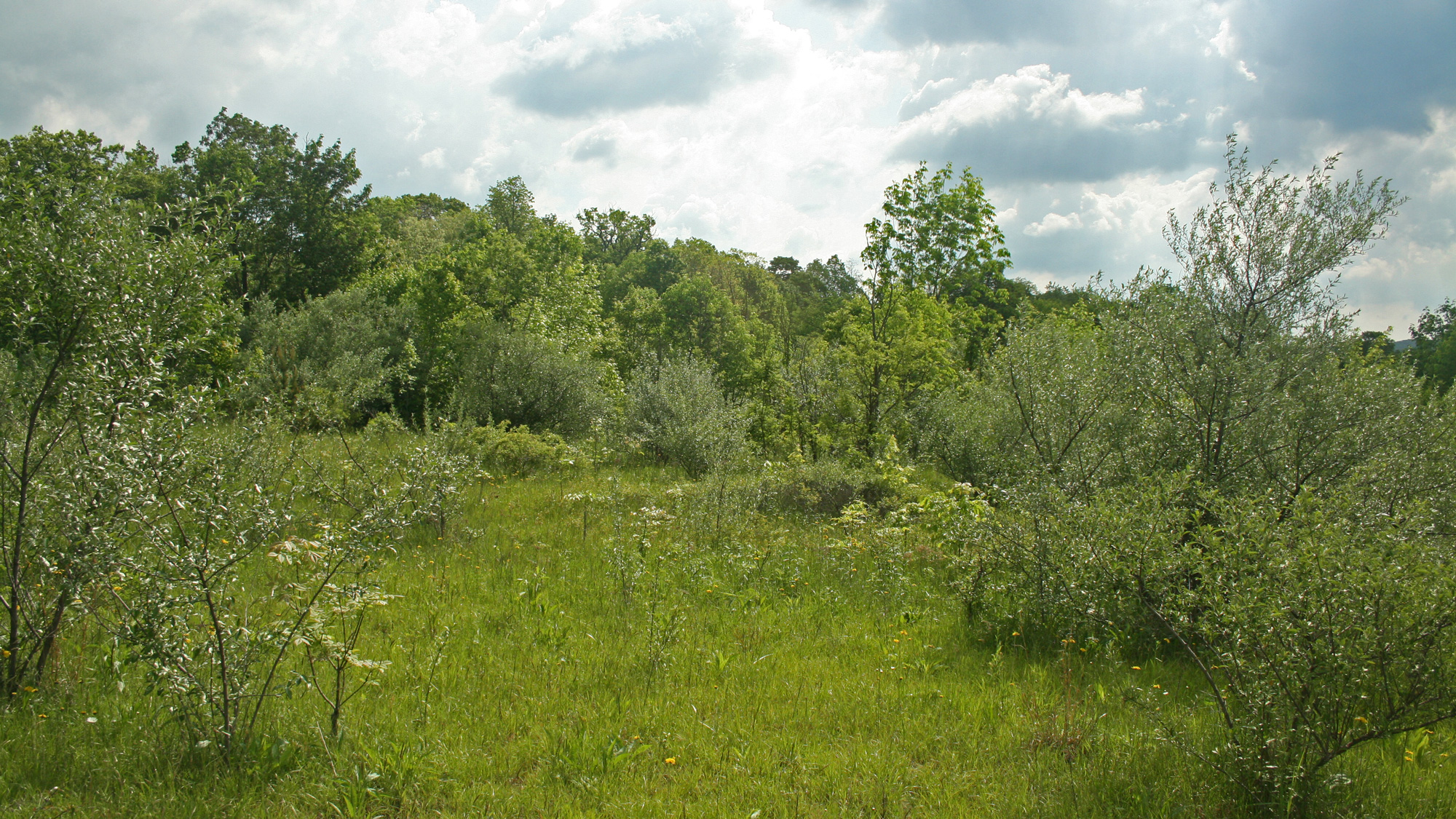
In a landscape now controlled by humans, the balance of habitat types can become skewed.
Up through the early part of the 20th century, mature forest was a scarce commodity.
Nearly every square inch of North America was systematically logged and logged again at a rapid clip. These were times when wood played a central role in nearly all human endeavors, as construction material and a source of warmth and energy.
Since then, land conservation, decreasing demand for forest products and globalization have relieved some of the logging pressure on eastern U.S. forests.
Now, especially in the Northeast, the challenge is to make sure that there is enough forest being cleared to supply the regenerating shrublands and young forest that many species (like woodcock) depend upon.
Adding to this challenge, the natural events that once cleared patches of forest to create a balance of habitats are no longer humming along.
Forest fires are less frequent and beaver populations remain at relatively low levels. Beaver were once incredibly abundant throughout North America.
As a result of the beaver’s nomadic patterns of building dams, flooding forest and moving on to new places when they use up the trees in an area, they busily maintained a vast mosaic of forest clearings and wetlands.
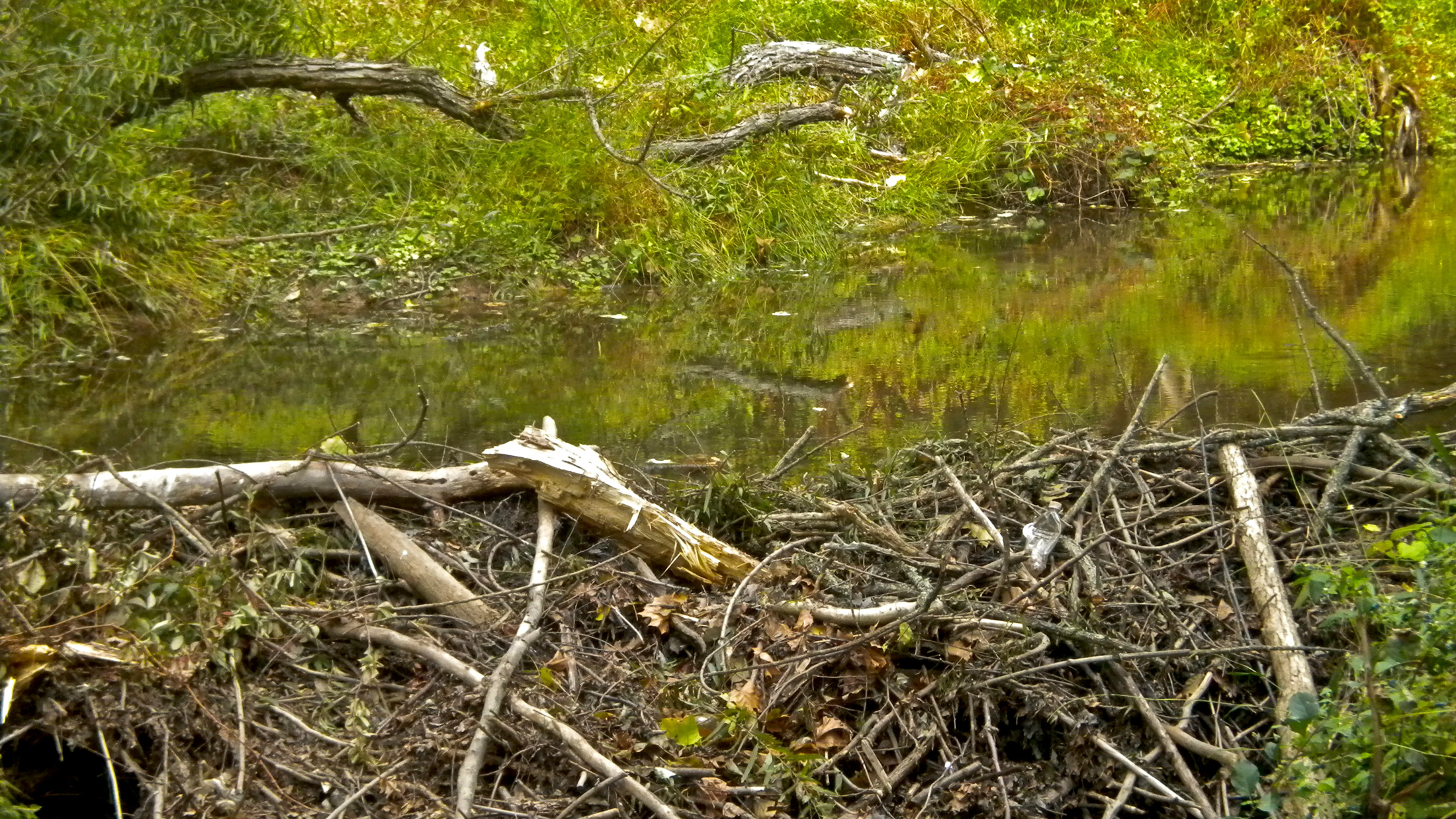
In the absence of natural processes that create openings, we have to do it the hard way: with people and machines.
When people take over management, things get complicated. They ask all kinds of questions that beavers never think to ask.
“What shall we manage for?”
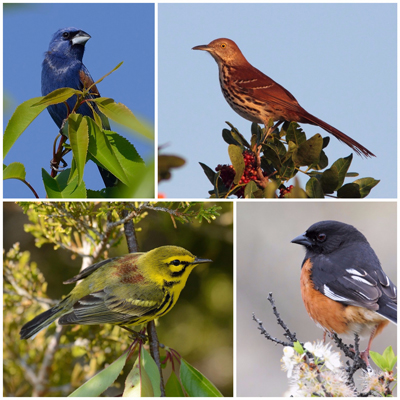
“Does management for one species amount to management against another?”
The “umbrella species” concept in wildlife management is one way of grappling with the needs of many species occupying the same landscape. It asks the questions “can managing for a single species serve the needs of many?”
In this regard, the woodcock unites.
If you provide the broad palette of habitats that woodcock require, you are also likely meeting the needs of species that at least use some fraction of this palette.
For example, recently cleared forest makes for good woodcock roosting and courtship habitat. At the same time, regenerating shrubs and saplings provide nesting habitat for a range of species such as golden-winged warbler, blue grosbeak and brown thrasher.
A whole different suite of bird species nest in mature forest where woodcock spend their days feeding, such as wood thrush, red-eyed vireo and black-throated-blue warbler.
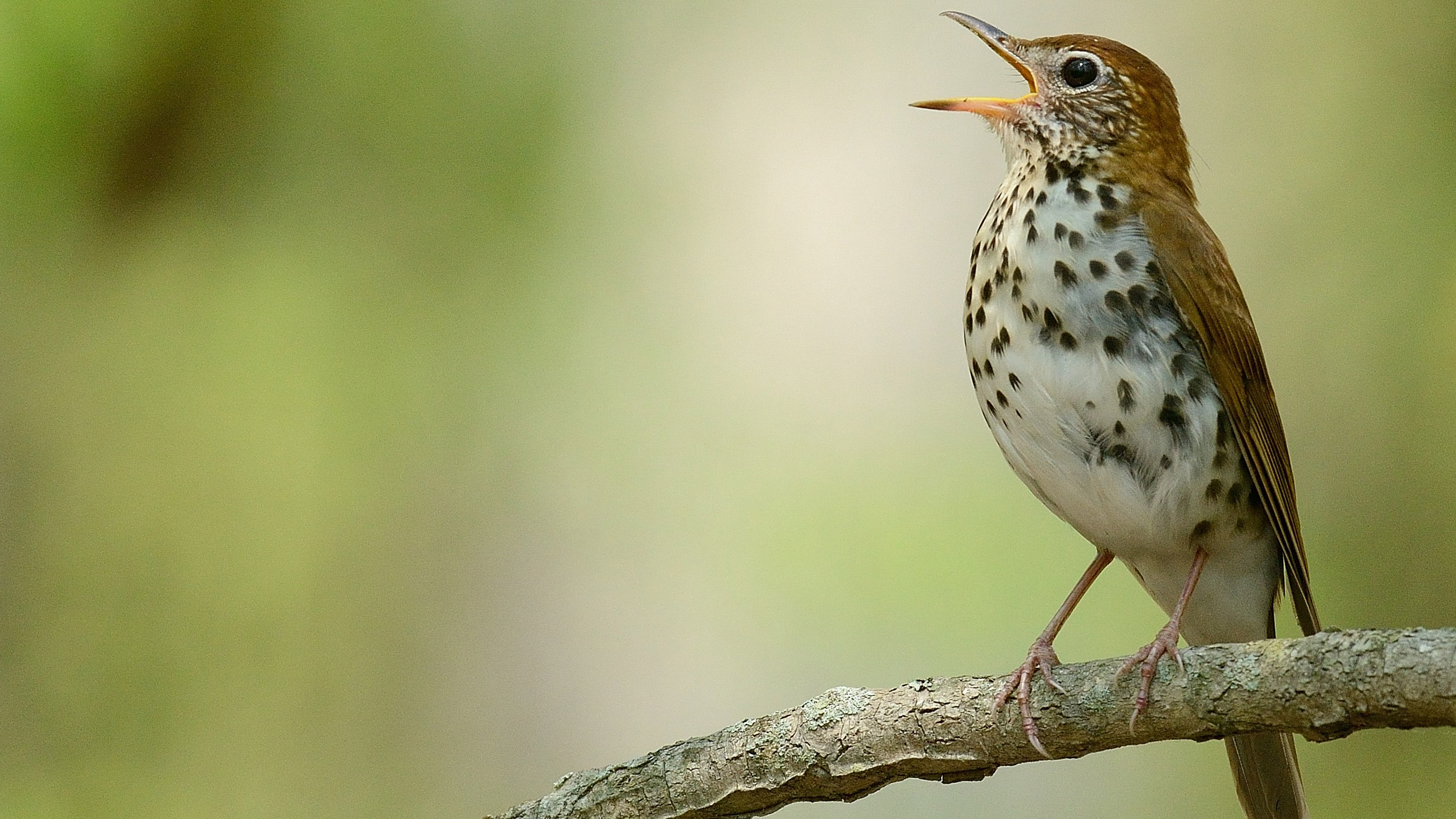
But there can be a management tension when a species of conservation concern uses only one habitat type.
If we want more golden-winged warblers, we need more shrubby fields.
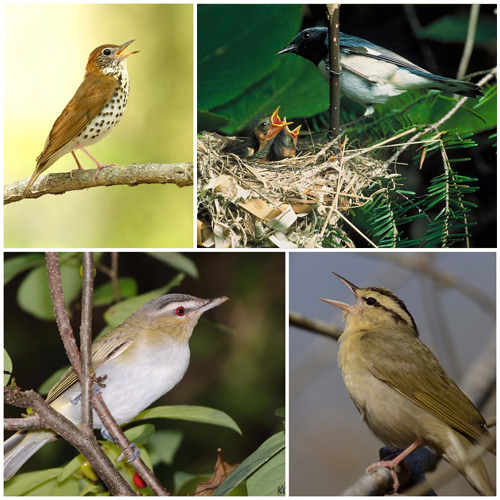
On the other hand, if we want more wood thrush, we need more mature forest.
You might think.
But recent research is revealing that even those species we thought were specialists might also require a broader range of habitats to have a successful breeding season – much like the woodcock.
Several studies have surveyed forest birds in summer during the nesting season and after the young have fledged. They’ve found plenty of “mature forest” specialists in clearcuts.
Likewise, they’ve found “young forest specialists” such as golden-winged warbler in mature forest, sometimes even nesting.
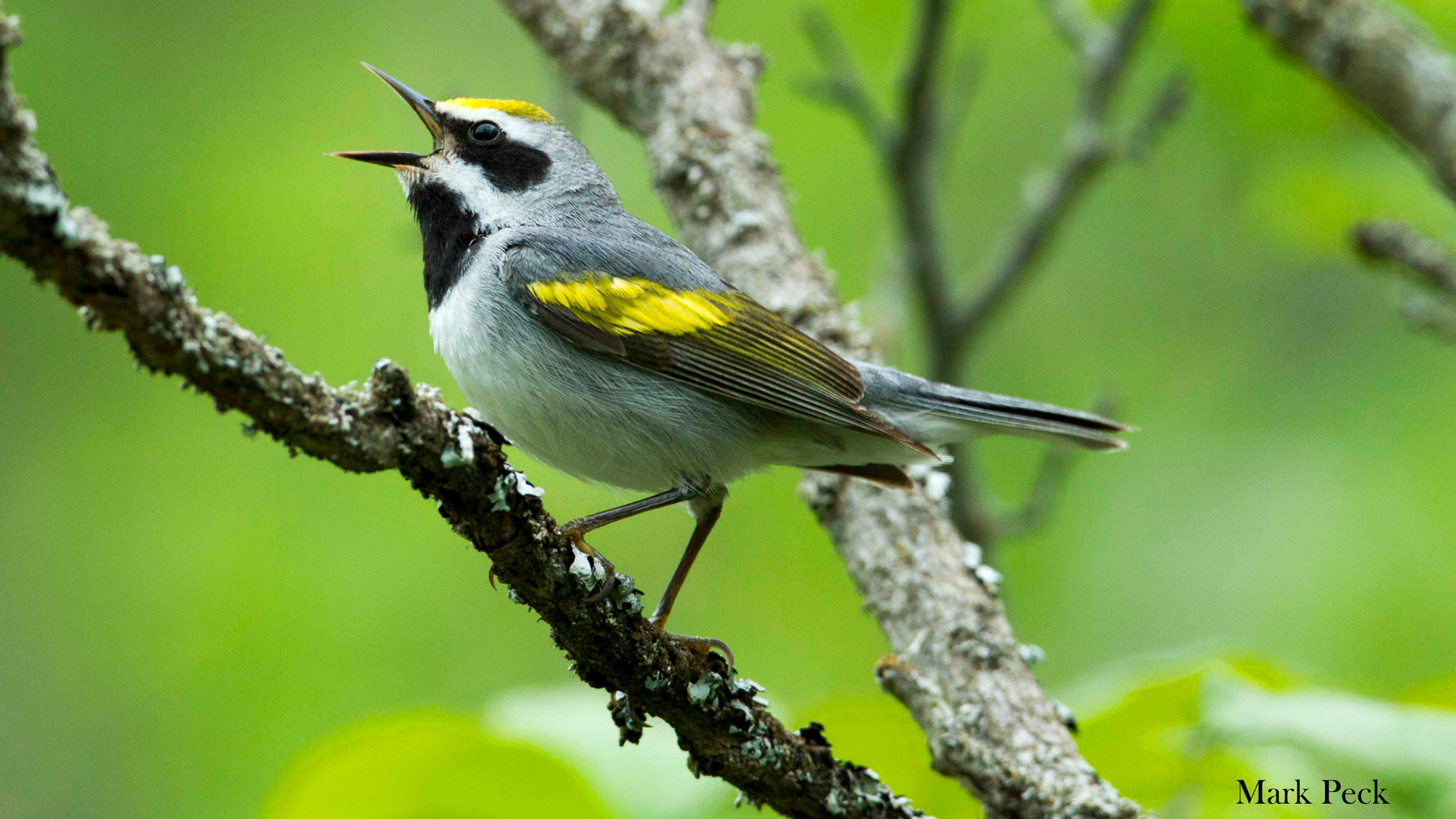
While golden-winged warbler and wood thrush might nest most often in their “assigned” habitat, researchers who use radio telemetry to track their daily movements have noticed that the birds are using multiple habitats throughout the nesting season.
Using this technique, a study in Minnesota showed that during the nesting season, male golden-winged warblers spent the majority of their mornings in young forest habitat, but spent the majority of their afternoons in mature forest.
Multiple habitat use becomes really prominent during the period when the young fledge and the adults start to molt, just prior to migration.
It appears that many species, whether they are considered mature forest or young forest specialists may preferentially use dense vegetation that is characteristic of regenerating forest.
The dense vegetation may help protect fledglings and vulnerable molting adults from predation.
What’s emerging from this body of research is a more nuanced view of the habitat needs of songbirds.
Both wood thrush and a golden-winged warbler, each poster children for habitats at opposite ends of spectrum, likely require a full range of habitats to thrive — from scrubby young growth up to mature forest.
Just like the woodcock!
Can all forest species snuggle under the (management) umbrella of the timberdoodle?
As “umbrella species” go, the woodcock does a pretty good job.
Although we can’t expect all of the thousands of species in a forest to be perfectly served by managing for woodcock, creating a mosaic of diverse habitats that benefit woodcock will likewise benefit a broad range of other wildlife.
In truth, our umbrella species could be any animal that needs a broad range of habitats in order to thrive. A ruffed grouse could serve this purpose just as well, or even a golden-winged warbler.
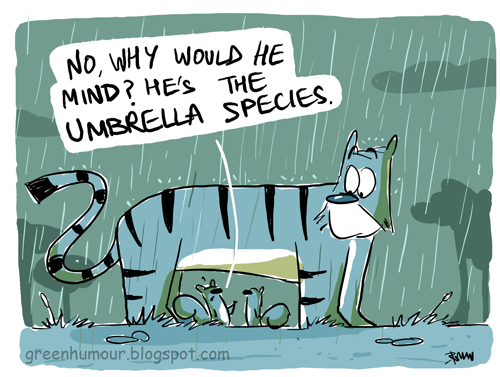
The bottom line is that these species are emblematic of the shifting mosaic of habitats that is created and perpetuated by forest disturbances. Again, with less frequent natural disturbances, all that mosaic-making is now largely up to us.
With this responsibility, we proceed imperfectly, using the best information we have to make decisions about how much forest to cut, how often and where.
Along the way conflicts inevitably emerge as we debate these decisions.
Maybe, in the end, the best management question we can ask is “what would beavers do?”
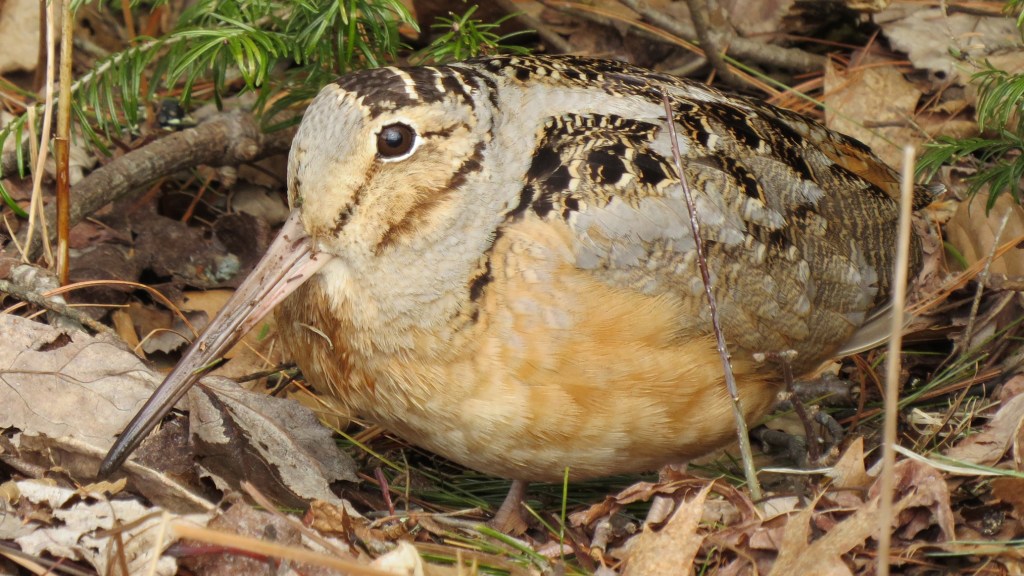



Dr. Smith, shares an important issue facing our birds especially in the north-east US. As stewards of the environment, birders need to understand the difference between commercial logging practices and wildlife management. Often wildlife managers use commercial loggers under their guidance which is portrayed as negative by some conversationalists. Smith states, “In a landscape now controlled by humans, the balance of habitat types can become skewed.” To me this is a call to environmental organizations to understand the need for young forests and how to effectively create this early successional habitat so critically disappearing. Like in Venn Diagrams there is an overlap area of common interests between wildlife management, environmental concerns and commercial logging. We, birders, need to support this area of common interest for the sake of our birds.
As a member of the Ruffed Grouse Society and American Woodcock Society, I am delighted that your science based reporting melds with the RGS and AWS missions of promoting healthy forests and abundant wildlife. Thanks for reminding us that wildlife need different forest types at different stages of life. My sincere thanks for this article, Joe.
The American Woodcock is a bird worth saving
This is fantastic work being done; great article and photography
If the American Woodcock is in decline why does the Pennsylvania Game Commission allow it to be hunted? Wouldn’t that mean further decline?
Excellent article-the best presentation I have seen of the need for preserving varied habitats. Bringing the role of the beaver into the discussion is a great way to show what some of our pre-settlement habitats were like.
Where is the evidence that “beaver populations remain at relatively low levels,” in the Northeast? I don’t see any citations to that effect and it flies in the face of all the Northeastern, Depts. of Conversation, Environmental Protection, Fish and Wildlife bureaus, that are unanimous in their opinions that beaver populations are either healthy, or healthy and growing.
The scientific data seems to be largely 20 years or so out of date, but suggests recovered populations which were rapidly growing at the time.
Trapping seasons have been expanded in many areas in recent years to keep populations from getting out of hand.
Here is an article from this very page which contradicts your statement on the beavers and seems to be in disagreement about there being too high of a percentage of old growth forest. https://blog.nature.org/2014/07/25/beavers-versus-old-growth-the-tough-reality-of-conservation/
The precolonial beaver population was between 60 and 400 million, while today’s population is between 6 and 12 million. This 1988 review (http://bit.ly/2nZB4cY) cites these numbers and discusses the role that beavers had across the landscape in creating wetlands and forest clearings.
Matt Miller’s post on beavers at the Woodburne Forest Preserve illustrates the rub – the flooding created by beavers in many cases is not tolerated because it conflicts with human endeavors.
Beaver populations are indeed resilient and they have recovered since being decimated by unregulated trapping, but their nomadic dam building is constrained to only the places where humans permit them to be. As a result, beaver activities are likely not meeting the habitat demands of other species that depend on young forest.
This means that humans need to pick up the slack to ensure that there is enough young forest to support species of conservation concern.
Clear cutting may seem wrong to some, but in many ways it benefits other species, such as Woodcock, Deer, Ruffed Grouse and Rabbits to name a few. There are probably many, many more species that benefit from new, young growth that we simply haven’t studied yet.
In Ontario, we are experiencing a severe decline in Moose populations. Many factors are being looked at including parasites, disease, over harvest, etc. I think one of the main contributing factors is the lack of clear cutting by a declining forest industry. By clear cutting, they encourage the growth of lush vegetation and smaller brushy browse species that the moose depend on for food and protection from predators. It is probably not the only fsctor, but in my mind, it is the single greatest fsctor contributing to the decline.
Clear cuts, while ugly to human eyes are often quite beneficial to wildlife and the local environment.
Ignoring, of course, the obvious fact that these species and others all did just fine for hundreds of thousands, if not millions of years without any management, let alone clearcutting, by humans at all.
Your post comes off as little more than excuse making for the timber industry.
Fantastic article! Author does a great job of showing the ‘gray’ in the old forest / young forest debate. Here in PA you can literally drive for hours across our interstates and not see a patch of young forest. There is plenty of NONforest like ag land, human settlements (fragmentation) but young forest is at a premium. And our state bird, the Ruffed Grouse, is paying the price dearly. 🙁
How very Sad.. Here in Central Virginia there is not one old growth tree left… we log.( clear cut is king!) . pave over, build and destroy.. no room for trees or turtles or birds… .. personally I think Box turtles are the hardest hit (literally and figuratively) turtles have been here for more than 200 million years… talk about an umbrella species, think they will survive us? Its not looking to promising, they can’t fly off to the next patch of wild…! . Lets leave some woods with natural undergrowth, and lots of leaves for the turtles… oh and yes… lets reintroduce beavers all over the place! What a mess we have made!